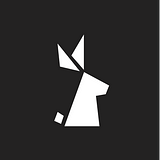Preface.
Let’s be honest, 2014 wasn’t a great year for Bitcoin. Mt. Gox was hacked, Butterfly Labs has a pending class action lawsuit, and bitcoin’s price dropped 67%. Not only that, 2015 kicked off with Bitstamp having 19,000 coins stolen. Over the last six years, bitcoin has been associated with scams, hacks, black market trading, and white collar crime in general. This bad press does not bode well for the future of bitcoin.
Trust is wavering in the community, for good reason. And even if a new person shows interest in Bitcoin, it’s harder for them to justify the risk. The resources to learn aren't easily accessible and the reputation is questionable at best. They don’t know who they can trust or what to believe. In order for bitcoin to survive, we need the public to understand, trust, and participate.
Since inception, Bitcoin wasn't created as a user friendly concept. Satoshi created a minimal viable product, more than a scalable technology. As a result, the outward facing visual assets for many of the related projects are anything but appealing or easy to use. Not to mention the overall feeling from the community is exclusionary for anyone not in the know. Companies like Coinbase, BitPay, and Chain are paving the way for more transparent, intuitive, and user focused products.
This series will explore the current issues with design in Bitcoin. We need to refresh the public’s perception and to do so we have to change how we present ourselves. 2015 will be a make it or break it year. It’s time for the community to truly embrace design, usability, and standardization.

You’re using it wrong.
We’ll start with the biggest and most controversial design issue: the “logo” for bitcoin. As in, there shouldn’t be a logo to begin with. It’s not a company, it’s not a product, it’s not a brand. Logos are synonymous with all of the above. Bitcoin is a currency and should be properly represented as such if we want to be taken seriously in the global financial market.

The logo itself went through several iterations based on Satoshi’s original design. What was chosen though—by a small amount of people years ago—wasn't meant for scale and lacks the support it needs. Early adopters have a nostalgic affinity for it, however that is a detrimental mindset and is preventing bitcoin from moving forward.

By using the logo and colors in sites, icons and apps, an unintended brand identity was created. While using orange and gold represents positivity and prosperity, it creates restrictions and inflexibility. Future users and developers don’t know if they're required to use said colors and icons to fall in line with bitcoin’s unofficial style guide.
Regardless of community efforts, we have to accept that it doesn’t meet any standards that are required for mass adoption. For example, despite continued attempts since 2011, the Unicode Consortium still has not accepted the symbol as a valid currency sign.
“[…] the use of the bitcoin symbol in (running) text has not been demonstrated. There may also be IP issues because bitcoin.org is using the symbol as a logo.” — Submission and Response
Their acceptance is essential to keep in line with other currency signs, such as dollars ($), euros (€), and yen (¥). The simple act of being able to type a symbol into a sentence opens bitcoin up to new possibilities.
Time to change it.
Even if it was accepted now, the symbol would have to be designed and supported by today’s standard and non-standard fonts before it’s available to the public. A project that would take years, if it happened at all. This leaves us with the current restrictive option of only using the “logo” as images, or using special font icons like Font Awesome.

So, what’s a more viable solution for this right now? We should popularize an easily accessible unicode symbol — a sign — for bitcoin:
Ƀ
Let’s talk about what requirements and criteria a new symbol should meet:
- To be recognized as a currency sign ($ € ¥ £ ¢)
- Distinct from existing currency signs (Ƀ vs ฿)
- Built from recognizable characters found on most keyboards
- Easily handwritten
- Ability to be implemented in serif, sans-serif fonts, and styles
- Scalable sizing

This symbol hits all of these points and on top of that, it has no major uses. It holds its own against recognized currency signs by having the horizontal line, like many others. It has a modern, forward thinking quality. Since it’s available on a wide range of fonts, it’s easily accessible and can be utilized for various needs. And for an added bonus, it has a lowercase version ( ƀ ) that can be used for smaller denominations of bitcoin, like bits.

Seriously, try writing it.


Alternatives aren’t a thing.
Wait, hold on. What about the ฿ symbol that everyone keeps using?
Yeah, no.
Facts: The baht (sign: ฿; code: THB) is the currency of Thailand. Thailand’s population is 67 million people (vs. Bitcoin’s debated 1–4 million users) and they’re not really cool with the community trying to “steal” their sign.
No contest. Sorry guys.
But multiple countries use $, what’s the difference?

The use of the dollar/peso sign ($) is historically connected. While the origin is still a bit debated on finer details, most scholars agree on the current theory. In the 1770s, the Spanish-American colonies denoted pesos as pˢ (also known as the “Spanish dollar”) in manuscripts. After continued business correspondence, their currency model was adopted by British-Americans. Over time, a shorthand symbol emerged with cooperation between these countries. You’ll see this trend across multiple countries and currencies.
But…
Listen, first off, it’s a digital currency and not a country. We’re trying to ease confusion, not add to it. Also, check out Google Fonts and see how many Latin based fonts actually support the Thai baht and think about it.
Aren't there other options?
I mean, sure, kind of…not really. Check out the wiki to see more.
Ƀ all the things!
It’s pretty easy to use.
There’s several ways to access the symbol, so here’s some guides to help you out. If you know faster ways to do it, let me know.
Ƀ Encodings | ƀ Encodings
Mac: Text Shortcut
iOS: Text Shortcut
Windows: Character Map
Android: Supported 5.0 and up.
Mac: Text Shortcut
iOS: Text Shortcut
Windows: Character Map
Android: Supported 5.0 and up.
And the most obvious way…
Copy & Paste: Ƀ
How can I help?
We need to kick off this refresh by bringing awareness to the community. There’s a few things we can do to start.

Spread the word—Start by talking about it! Tweet about the #bitcoinrefresh. Post about it on your blog. Educate people on why you support the new Ƀ in discussions.
Use it on your site—Do itttt. Update yo’ stuff. I mean, don’t slap the poor thing everywhere, but start using it where it seems appropriate.
Texts — Setup text shortcuts on your phone (bc = Ƀ) to quickly send people messages.
Make extensions — Let’s make better tools like keyboards and extensions to make it easier for more people.
Tickers — If your site has a price ticker and you’re using ฿, swap it out!
Promote it — Make shirts, buttons, and other stuff to bring awareness.

Thanks to Chris Shepherd.
A group of PhD students at Stanford University have created the first btc to be mined on a smartphone
pi Minepi.com/AJMoney Use 'AJMoney' as your invite code!
pi Minepi.com/AJMoney Use 'AJMoney' as your invite code!
More From Medium
Related reads
Related reads
Related reads
Welcome to a place where words matter. On Medium, smart voices and original ideas take center stage - with no ads in sight. Watch
Follow all the topics you care about, and we’ll deliver the best stories for you to your homepage and inbox. Explore
Get unlimited access to the best stories on Medium — and support writers while you’re at it. Just $5/month. Upgrade


























